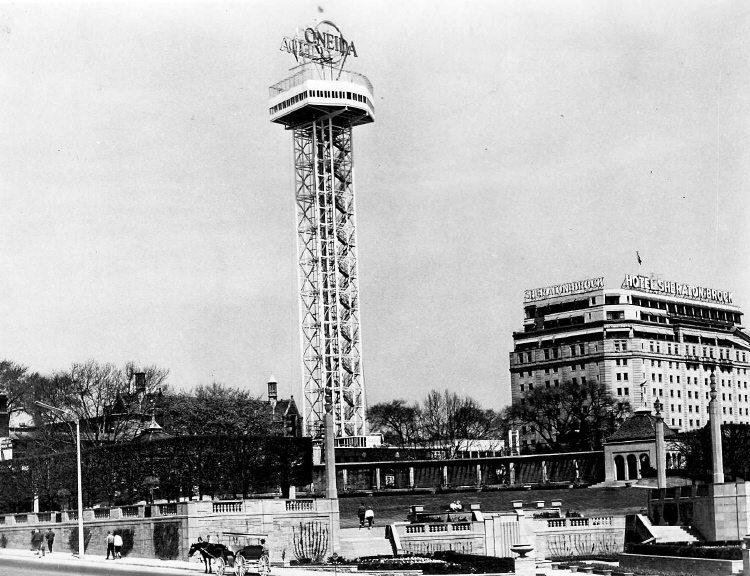You know, when you hear “Casino Niagara,” your mind probably goes straight to slot machines and blackjack tables. And sure, that’s a big part of it! But here’s the thing: the ground that casino sits on has seen more drama and reinvention than just about any other patch of land in the city. It’s like the ultimate shape-shifter, always changing to match the heartbeat of Niagara Falls itself. Honestly, if this piece of land could talk, the stories it would tell. It’s never been content to just sit still””it’s always evolved right along with the city, catching the next wave of whatever was new and exciting, from a loyalist farm to the industrial age and beyond.
From a Loyalist Farm to a Stone Homestead
Our story starts in 1782, with a man named Philip George Bender. As a United Empire Loyalist who served with Butler’s Rangers, Bender was granted a huge 300-acre plot of land for his service””a reward that covered much of what we now consider downtown Niagara Falls. It’s fascinating to imagine that land not as city streets, but as sprawling farmland, with the thunder of the Falls a constant, distant rumble. After the dust settled from the War of 1812, he built a sturdy stone house to replace his original wooden home, putting down roots that would last for generations. The Bender family held onto this homestead for nearly a hundred years, a testament to their connection to the land, before it caught the eye of an industrialist with a vision.
The Clang of Industry: The Oneida Silverware Era
In 1880, John Humphrey Noyes, the founder of the famous Oneida Community in New York, bought the property. The real shift came in 1916 when his son, Pierrepont B. Noyes, decided to build the Canadian Oneida silverware factory right there. This wasn’t just a new business; it was the dawn of a new era for the local workforce. The factory became a major employer, its whistles marking the shifts, and by 1925, the old stone house was gone, replaced by a three-story factory building. The site was now the heart of local industry, producing fine silverware that would grace dinner tables across the country.
The most dramatic change to the skyline came in 1964 with the construction of the stunning 355-foot Oneida Tower. With its open steel frame, gliding glass elevators, and an observation deck with jaw-dropping views of the Falls, it instantly became a must-see landmark. For years, it was the place to get a bird’s-eye view of the majestic cataracts, a symbol of modern tourism standing literally on the foundations of the past.

The Whimsical Years: Maple Leaf Village
By the 1970s, the mood shifted again from industry to pure, unadulterated fun. The tower was renamed (first the Niagara Tower, then the Kodak Tower), and in 1977, the fantastic Maple Leaf Village amusement park sprang up around it. This $22 million complex was a wonderland of bumper cars, carnival swings, shops, and Canada’s largest Ferris wheel. It’s a charming detail that the park’s design even used stone salvaged from the old demolished factory, weaving a physical piece of the industrial past into the new fun.
For over a decade, it was the place for family outings; the air filled with the scent of popcorn, the joyful screams from the rides, and the general buzz of excitement. If you grew up in the region during that time, you likely have a faded photo of yourself there. But like many grand amusement parks, it eventually faced financial troubles. By the early 1990s, the rides were sold off, and the gates closed for good in 1993, leaving the site silent and full of memories.
1981 Maple Leaf Village Commercial:
A New Chapter: The Birth of Casino Niagara
For a few years, the site sat quiet, a ghost of its former selves. But the location was too prime to stay empty for long. The site’s next act began in 1995 when the Ontario government chose it as the home for Niagara Falls’ first modern casino. In a whirlwind construction period, Casino Niagara opened its doors in December 1996, instantly drawing a new wave of tourists and reshaping the city’s entertainment scene. It was a bold move that signaled a new chapter for Niagara Falls, transforming it from a seasonal destination into a year-round powerhouse of entertainment. The casino didn’t just bring gaming; it brought jobs, nightlife, and a renewed energy that spilled over into the surrounding streets.
The Casino Today: A Lasting Legacy
While the larger, glitzier Fallsview Casino Resort opened in 2004 up on the hill, Casino Niagara holds its own as the beloved original. It’s often seen as the more accessible and vibrant cousin, with a classic energy that regular visitors adore. Its gaming floor, live shows, and prime location just steps from the neon-lit Clifton Hill keep it an essential part of any Niagara visit. It’s the place where you can try your luck and then immediately step out into the bustling heart of the tourist district.
So, when you walk through its doors, you’re not just stepping into a casino. You’re walking on ground that has been a farm, a factory, a tower, and an amusement park. You’re part of a story that began with a Loyalist soldier and continues with every visitor who tries their hand at a game of blackjack or simply pauses to enjoy the atmosphere. Casino Niagara is a living landmark, a place that has always been at the very heart of the Niagara Falls experience, constantly evolving while always honouring the rich layers of history buried just beneath its foundation.